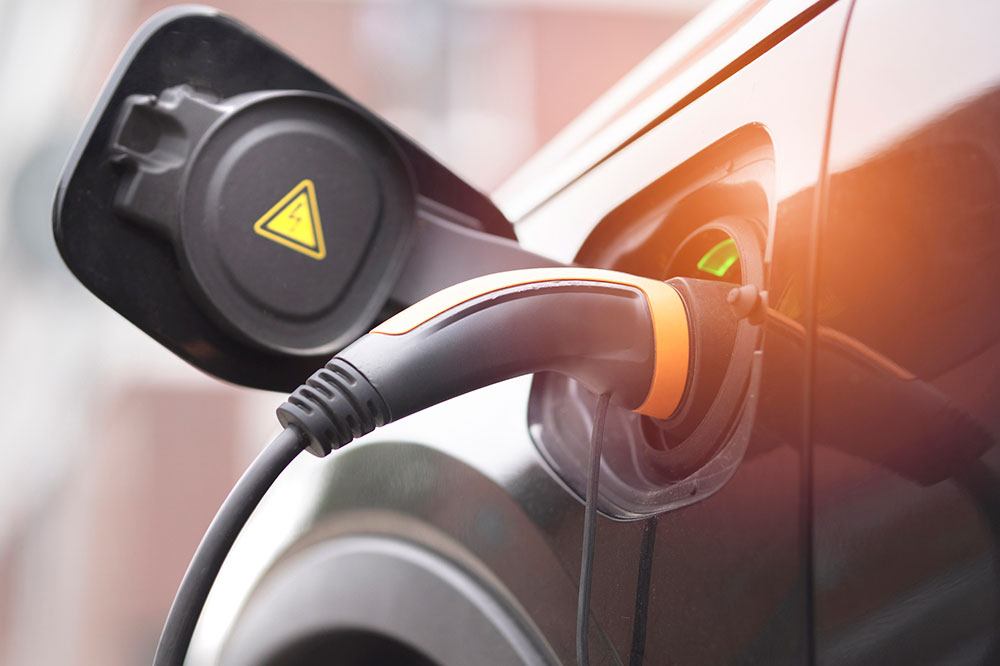What you need to know before switching to an electric car
If you are thinking of taking the plunge and switching to an electric vehicle (EV) here’s some things you should consider.

The price of fuel and the impact on the environment is on the mind of almost every driver of a petrol or diesel-powered internal combustion engine (ICE) vehicle.
The obvious things people first think of when considering a switch to an EV is the extra purchase cost and limited range compared with a traditional ICE vehicle.
Over time, with advancements in technology, these gaps will diminish and there are already viable options available.

A hybrid vehicle can save you on fuel costs if you are doing mainly suburban driving.
A standard hybrid has a small high-voltage battery or traction battery (much smaller compared to a full battery electric vehicle (BEV) and it works in conjunction with the internal combustion engine to capture energy when braking and decelerating and then reuses it under acceleration to reduce fuel consumption.
Some hybrids can also drive on just electric power at low speeds for a very limited range.
However, hybrid vehicles save little fuel if you are mainly doing high speed highway trips as braking and acceleration are not as frequent and so the electric motor isn’t as active.

A plug-in hybrid electric vehicle (PHEV) is a hybrid with a larger battery pack, that can be plugged in to a suitable power outlet and recharged, unlike a standard hybrid that recharges from regenerative braking and cannot be plugged in and charged.
The advantage of a plug-in hybrid is that it can be driven just on the electric motor alone, albeit for a much shorter range than a full battery electric vehicle (BEV).
Typical range for a plug-in hybrid is about 60km, which according to the Australian Bureau of Statistics is generally enough to cover the average daily commute in Australia.
PHEV vehicles can be a good option for driving long distances because the vehicle switches back to the internal combustion engine (usually petrol) when the battery runs out.

Drivers of full battery electric vehicles (BEVs or EVs) have high ownership satisfaction.
Beside their green feel-good factor and the fact that you aren’t spending big dollars on fuel anymore, owners often report love of the driving experience, with lots of instant and quiet torque.
An electric vehicle can also be more convenient for if you can charge at home and have access to fast chargers for your occasional longer road trips.
If you’re planning to regularly drive somewhere with limited access to the fast-charging network, you may have to wait for longer-range electric vehicles to become available on the market and better fast-charging infrastructure before you consider the plunge though.
At present, full battery electric vehicles (BEVs or EVs) can be expensive to purchase and insure when compared with similar internal combustion engine vehicles.
The higher purchase price of BEVs also needs to be considered because that also generally translates to higher finance costs if you can’t pay for the car in full.
However, when compared with internal combustion engine vehicles, the running costs of BEVs are generally lower.
The greater the distance you travel annually, the better value the electric vehicle becomes due to the lower running costs per km, especially if you can charge the vehicle for free from a home solar system, for example.
Electric car servicing costs
An EV will be cheaper to service and maintain compared with an ICE vehicle.
An EV will not require regular scheduled maintenance on the electric motor and most EVs do not have a multi-speed transmission (unlike ICE vehicles) which eliminates servicing costs on these components. Servicing of steering, brake and suspension systems will still be required.
To make a comparison, at the time of writing the Hyundai Ioniq EV costs $160 for each of the first five services at 1,5000km intervals according to the manufacturer’s website.
The Hyundai Ioniq petrol version costs $265 for each of the first, second, third and fifth services and $465 for the fourth. This equates to $800 for the EV and $1,525 for the ICE version.
To see which is the best option for your needs you need to work out what your current annual payments are for fuel, servicing, insurance, finance repayments and registration. You can then repeat the process for each of the hybrid and electric options to see if there is a cost benefit for how many kilometres you drive annually.
It may turn out that a battery electric vehicle is still more expensive due to a high purchase price, but a plug-in hybrid might save you money if you can run it on pure electric power for most of the time.
There is, however, a light at the end of the tunnel – with fuel prices continuing to rise, more and more electric vehicles coming onto the Australian market and increasing electric vehicle incentives and discounts.
The rapidly evolving technology also indicates that soon it will be cheaper to purchase a battery electric vehicle instead of an internal combustion engine vehicle.
Related topics
Things to note
The information in this article has been prepared for general information purposes only and is not intended as legal advice or specific advice to any particular person. Any advice contained in the document is general advice, not intended as legal advice or professional advice and does not take into account any person’s particular circumstances. Before acting on anything based on this advice you should consider its appropriateness to you, having regard to your objectives and needs.
Insurance Products (excluding Travel Insurance) are issued by RACQ Insurance Limited ABN 50 009 704 152 (RACQI) and arranged by its agent, RACQ Distribution Services Pty Ltd (RDS) ABN 35 116 361 650, AFSL 567130 and RDS' authorised representatives (including RACQ Operations Pty Ltd ABN 80 009 663 414, AR No. 234978 (RACQO). Conditions, limits and exclusions apply. RDS and RACQO are in the RACQ group of companies. One of the companies in the RACQ group of companies has a minority shareholding in RACQI.
RDS and RACQO have not taken your personal objectives, circumstances or needs into account when preparing advice regarding insurance products and you will need to consider whether the advice is appropriate for you. Read the Product Disclosure Statement (PDS) and any applicable Supplementary PDS before making a purchase decision on this product. You can also access our Target Market Determinations on this website. RDS receives a commission from RACQI for the policies it arranges. RACQO receives fees paid for services it provides to RDS. Further details about remuneration are available on request prior to purchasing.
Banking and loan products issued by Members Banking Group Limited ABN 83 087 651 054 AFSL/Australian credit licence 241195 trading as RACQ Bank. Terms, conditions, fees, charges and lending policies apply. This is general advice only and may not be right for you. This information does not take your personal objectives, circumstances or needs into account. Read the disclosure documents for your selected product or service, including the Financial Services Guide and the Terms and Conditions, and consider if appropriate for you before deciding.
Except for RACQ Bank, any RACQ entity referred to on this page is not an authorised deposit-taking institution for the purposes of the Banking Act 1959 (Cth). That entity’s obligations do not represent deposits or other liabilities of RACQ Bank. RACQ Bank does not guarantee or otherwise provide assurance in respect of the obligations of that entity, unless noted otherwise.
RACQ Bank subscribes to the Customer Owned Banking Code of Practice which establishes higher standards than the law requires. The Code reflects modern consumer expectations and developments in approaches to issues such as consumer vulnerability, guarantors, and supporting customers through financial hardship. Please read our Customer Owned Banking Code of Practice page for more information.
RACQ Operations Pty Ltd (ABN 80 009 663 414 AR 000234978) and Members Travel Group Pty Ltd (ABN 45 144 538 803 AR 000432492) are acting as an Authorised Representative of the issuer of the insurance, Tokio Marine & Nichido Fire Insurance Co., Ltd. (ABN 80 000 438 291 AFSL 246 548). Any advice set out above is general in nature only, and does not take into account your objectives, financial situation or needs. Before purchasing any travel products, please consider the RACQ Travel Insurance Product Disclosure Statement (PDS) and the Target Market Determinations (TMDs) that apply to these products. Whilst the PDS outlines the Terms and Conditions of these products, the TMDs outline the intended class of customers that comprise the target market for these travel products. This will allow you to consider which products best suit your objectives, financial situation and needs and consider the products appropriateness to your personal circumstances. TMDs also outline matters involving the distribution and the review of these products. The PDS, Supplementary PDS and TMDs for each travel product can be found here.

